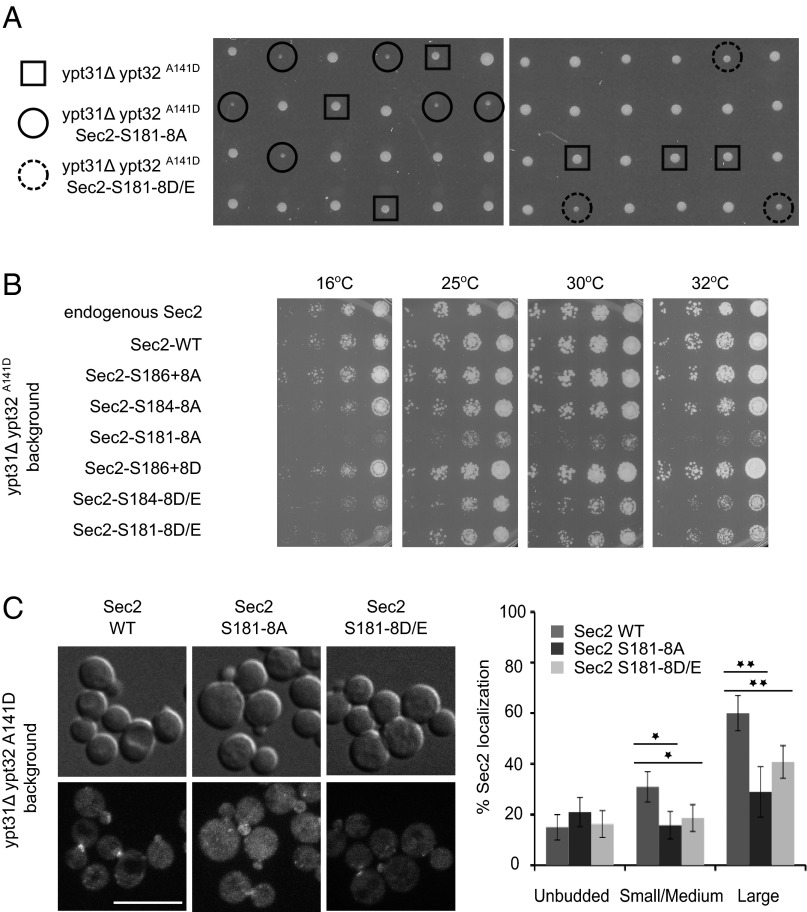Fig. 6.
Locking Sec2p in either its phosphorylated or unphosphorylated state affects both its localization and yeast growth. (A) Tetrads dissected from diploid strains carrying the sec2–3×GFP S181–8A or D/E, ypt31Δ, and ypt32A141D alleles. ypt31Δ and ypt32A141D spores are shown within squares. The triple-mutant spores ypt31Δ and ypt32A141D sec2p S181–8A or D/E are shown within continuous or dashed circles, respectively. (B) Serial dilutions of cells expressing different phospho-mutant alleles of Sec2p in the ypt31Δ ypt32A141D background. Cells were spotted and grown on YPD plates at 25 °C, 30 °C, or 32 °C for 2 d or at 16 °C 6 d. (C) Localization of wild-type Sec2p-3×GFP and phospho-mutants (S181–8A and D/E) fused to 3×GFP. Cells were grown overnight at 25 °C to midlog phase in a synthetic medium containing 2% glucose and then were pelleted and observed immediately. (Scale bar, 10 μm.) Around 150 cells were counted for each experiment, and the mean and SD of three different experiments are shown. Values indicate the percentage of cells showing a polarized localization of Sec2p in unbudded cells or an accumulation of Sec2p at the bud tip of small/medium cells or at the mother–daughter neck of larger cells. *P < 0.02; **P < 0.005, Student t test.

